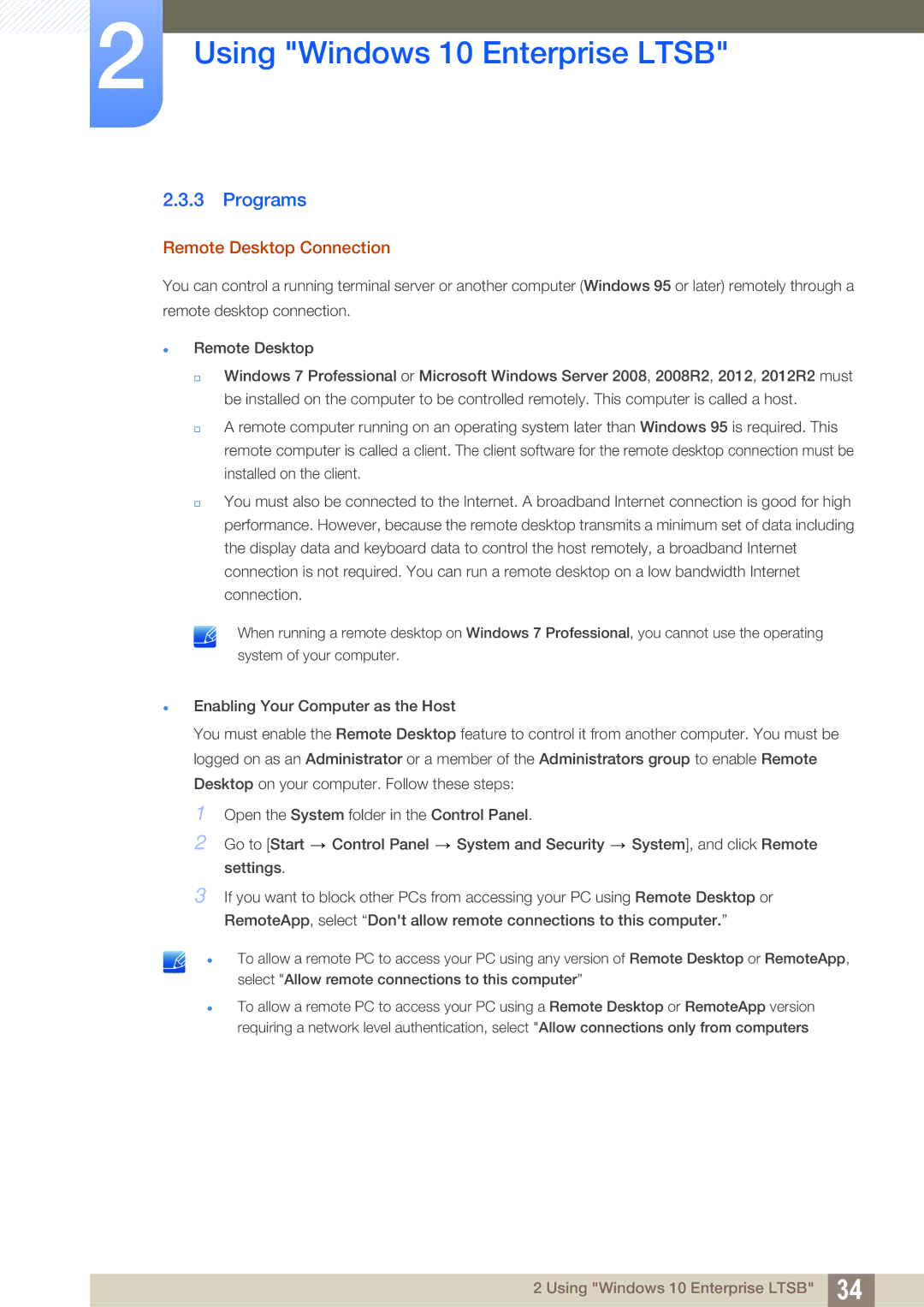
2Using "Windows 10 Enterprise LTSB"
2.3.3 Programs
Remote Desktop Connection
You can control a running terminal server or another computer (Windows 95 or later) remotely through a remote desktop connection.
Remote Desktop
Windows 7 Professional or Microsoft Windows Server 2008, 2008R2, 2012, 2012R2 must be installed on the computer to be controlled remotely. This computer is called a host.
A remote computer running on an operating system later than Windows 95 is required. This remote computer is called a client. The client software for the remote desktop connection must be installed on the client.
You must also be connected to the Internet. A broadband Internet connection is good for high performance. However, because the remote desktop transmits a minimum set of data including the display data and keyboard data to control the host remotely, a broadband Internet connection is not required. You can run a remote desktop on a low bandwidth Internet connection.
When running a remote desktop on Windows 7 Professional, you cannot use the operating
system of your computer.
Enabling Your Computer as the Host
You must enable the Remote Desktop feature to control it from another computer. You must be logged on as an Administrator or a member of the Administrators group to enable Remote Desktop on your computer. Follow these steps:
1 Open the System folder in the Control Panel.
2 Go to [Start ![]() Control Panel
Control Panel ![]() System and Security
System and Security ![]() System], and click Remote settings.
System], and click Remote settings.
3 If you want to block other PCs from accessing your PC using Remote Desktop or RemoteApp, select “Don't allow remote connections to this computer.”
To allow a remote PC to access your PC using any version of Remote Desktop or RemoteApp, select "Allow remote connections to this computer”
To allow a remote PC to access your PC using a Remote Desktop or RemoteApp version requiring a network level authentication, select "Allow connections only from computers
2 Using "Windows 10 Enterprise LTSB" 34
